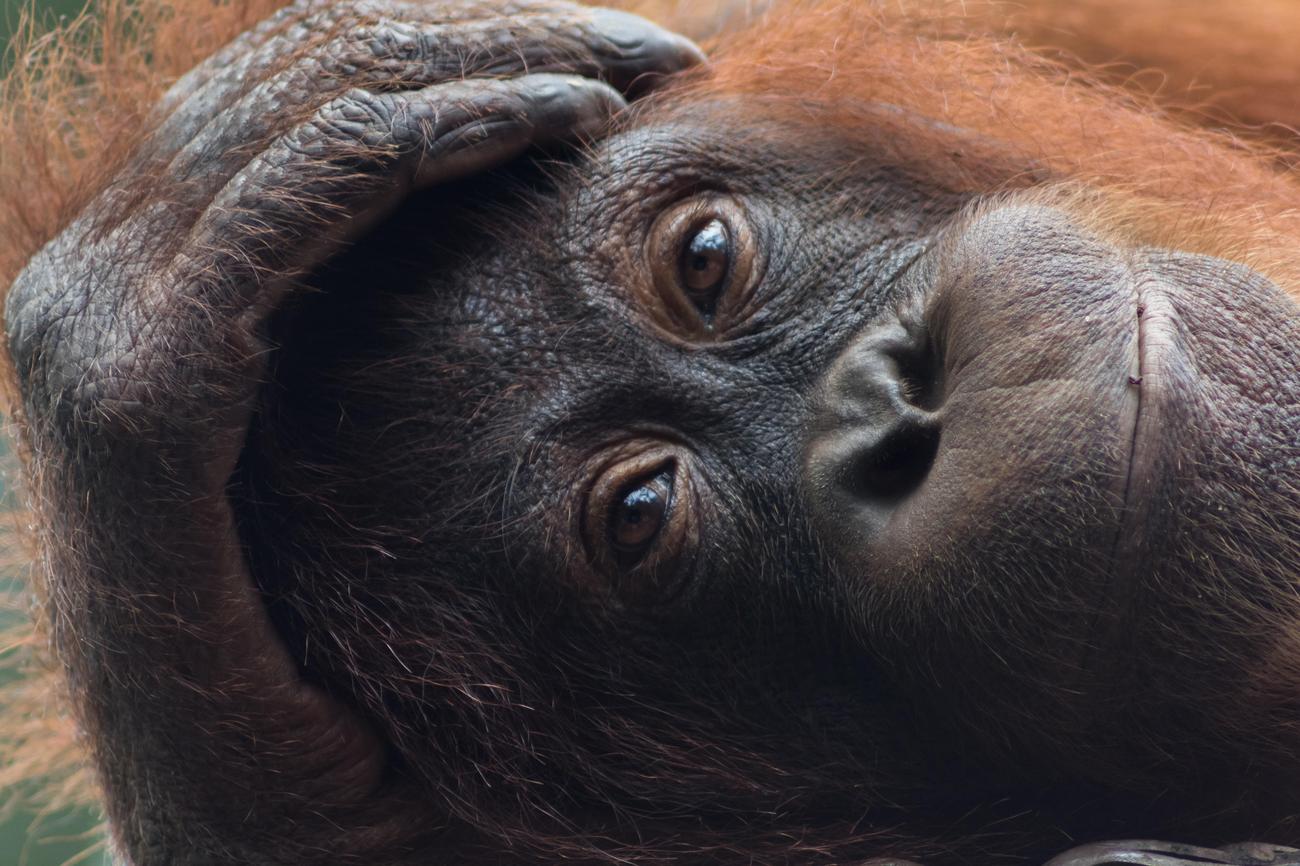Embark on a captivating journey through the lush rainforests of Southeast Asia as we unravel the enigmatic world of orangutan habitats. In this article, we delve deep into the unique marvels that distinguish these incredible primate ecosystems from any other on Earth. Prepare to be astonished as we explore the intricate relationship between the fascinating orangutans and the breathtaking environments they call home. With expert insights and research-backed knowledge, we bring you an exclusive glimpse into the hidden treasures of these remarkable habitats.

Unique Aspects of Orangutan Habitat
Orangutans are incredible creatures that inhabit the lush rainforests of Indonesia and Malaysia. These gentle giants find their homes in a variety of habitats, ranging from peat swamp forests near sea level to elevated mountainous forests. They are highly adapted to life in the trees and spend about 90% of their time navigating the canopies. But what makes orangutan habitats truly unique? Let’s embark on a journey to unravel the marvels that define these extraordinary ecosystems.
First and foremost, orangutan habitats boast a remarkable natural diversity that provides a rich tapestry for these apes to thrive. The dense rainforests are adorned with an array of towering trees, creating a complex network of branches and vines that serve as highways for orangutans to traverse. In this three-dimensional world, orangutans have honed their exceptional arboreal skills, effortlessly swinging through the dense vegetation and skillfully balancing on branches. Their strong arms and hands, combined with their remarkable arm span, enable them to effortlessly navigate their way through the intricate maze of the forest. The interplay between orangutans and their arboreal habitats is truly a sight to behold, showcasing the harmonious bond between these remarkable creatures and their environment.
As I delve deeper into my research, I am continually fascinated by the relationship between orangutans and the fruit-bearing trees that grace their habitats. Orangutans predominantly subsist on a diet of fruit, and their foraging behavior plays a crucial role in shaping their environment. Their feeding habits have a direct impact on the dispersal of seeds, contributing to the regeneration and diversity of the forest ecosystem. Orangutans possess a remarkable memory of the locations where they find their favorite fruits, returning to feed on them when they ripen. This behavior aids in the dispersal of seeds, allowing plants to colonize new areas and ensuring the survival of various tree species. As they move through the forest, orangutans unwittingly become the guardians of their habitat, nurturing the delicate balance of their surroundings.
Another captivating aspect of orangutan habitats lies in the complex social structure of these solitary creatures. While orangutans are generally solitary animals, their habitats serve as meeting grounds for social interaction. The dense vegetation provides ideal settings for chance encounters, allowing individuals to communicate through vocalizations and visual displays. When mating season arrives, male orangutans engage in a unique behavior known as the long call. In this awe-inspiring display, males emit a series of deep calls that echo throughout the forest, effectively announcing their presence and asserting dominance. This fascinating social behavior showcases the significance of orangutan habitats as platforms for communication and mating rituals, fostering the continuation of their species.
However, as wondrous as these habitats appear, they are sadly under threat. The relentless destruction of rainforests for logging, agriculture, and palm oil plantations has dealt a devastating blow to orangutan habitats. This destruction, coupled with poaching and the illegal pet trade, has driven orangutan populations to the brink of extinction. Without urgent and concerted conservation efforts, we risk losing these magnificent creatures and the unique habitats they call home. It is our collective responsibility to protect and preserve orangutan habitats for future generations to marvel at and to ensure the survival of this critically endangered species.
In conclusion, the unique aspects of orangutan habitats captivate the hearts and minds of wildlife enthusiasts and researchers alike. The interplay between orangutans and their arboreal homes, the intricate relationship between their feeding habits and the forest ecosystem, and the captivating social behaviors displayed within these habitats truly make them exceptional. But with these marvels come great challenges. It is imperative that we recognize the importance of orangutan habitats, take action to conserve them, and raise awareness about the critical role they play in the survival of orangutans and the preservation of our planet’s biodiversity. So join me on this journey of discovery, as we strive to unravel the secrets of orangutan habitats and cherish their uniqueness for generations to come. As Mahatma Gandhi once said, “The greatness of a nation and its moral progress can be judged by the way its animals are treated.” Let us rise to the occasion and be stewards of these remarkable creatures and their habitats.
Sources:
1. “Orangutan.” Smithsonian’s National Zoo. (https://nationalzoo.si.edu/animals/orangutan)
2. “The Orangutan: Characteristics, Behavior and Habitat.” My Animals. (https://myanimals.com/animals/wild-animals-animals/mammals-orangutan/)
3. “Orangutans.” National Geographic. (https://www.nationalgeographic.com/animals/mammals/o/orangutan)
Orangutans are fascinating creatures that inhabit the lush rainforests of Southeast Asia. If you’re curious to learn about the interesting facts surrounding their habitat and behavior, click here to discover more about their incredible lives in the wild. We invite you to explore this collection of captivating information on orangutans’ habitat and be amazed by the wonders of their natural world. So, prepare to be astounded as you delve into the intriguing world of orangutans’ habitat by clicking on this link: Interesting Facts About Orangutans Habitat.
FAQ
Question 1
What are the different types of orangutan habitats?
Answer 1
Orangutans can be found in a variety of habitats, ranging from peat swamp forests near sea level to mountainous forests almost a mile above sea level. They are highly arboreal and can be found in all levels of the forest, from the forest floor to the canopy.
Question 2
What is the primary diet of orangutans?
Answer 2
Orangutans primarily live on a diet of fruit. They spend about 90% of their time in the trees foraging for food during daylight hours.
Question 3
What threats do orangutans face?
Answer 3
Orangutans are threatened by habitat loss, hunting, and the illegal pet trade. These factors contribute to their critically endangered status. The orangutan population is estimated to be around 25,000.
Question 4
What is the expertise of a wildlife biologist studying orangutan habitats?
Answer 4
A wildlife biologist specializing in orangutan habitats possesses an extensive background in researching unique aspects of these habitats. They have a deep understanding of the intricate relationship between orangutans and their environment. They collect comprehensive data on orangutan behavior, population dynamics, and habitat degradation to contribute to the conservation of these primates.
Question 5
What is the purpose of studying orangutan habitats?
Answer 5
Studying orangutan habitats is crucial for primate conservation efforts. By understanding the distinctive elements of their habitats, researchers can raise awareness about the importance of preserving these fragile ecosystems. It helps in gaining a deeper understanding of the remarkable qualities that make orangutan habitats truly exceptional.
- Discover Long Black Pepper: Flavor & Health Benefits - April 25, 2025
- Shocking Twists: The Grownup Review: Unreliable Narration - April 25, 2025
- A Quiet Place Book vs Movie: A Deep Dive - April 25, 2025
















